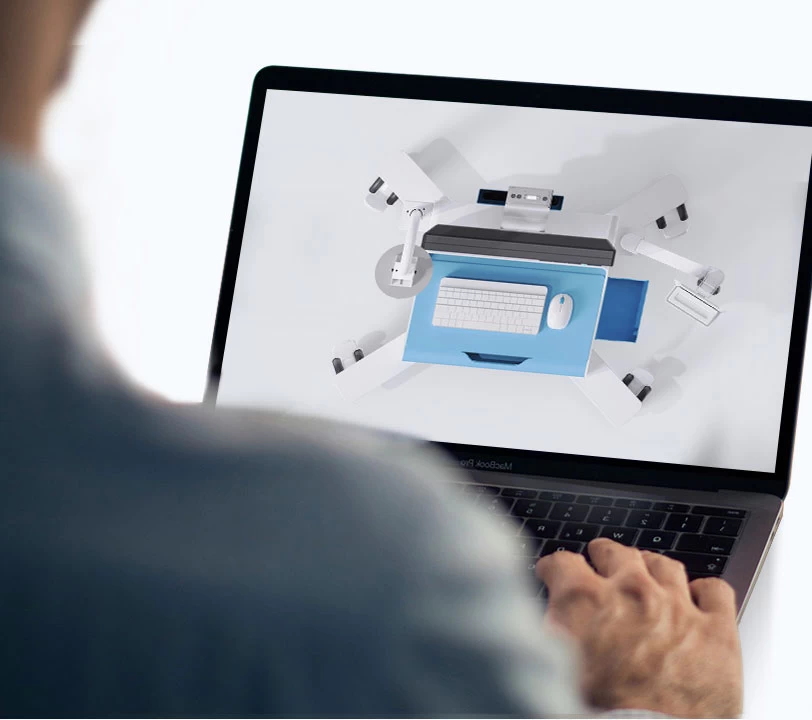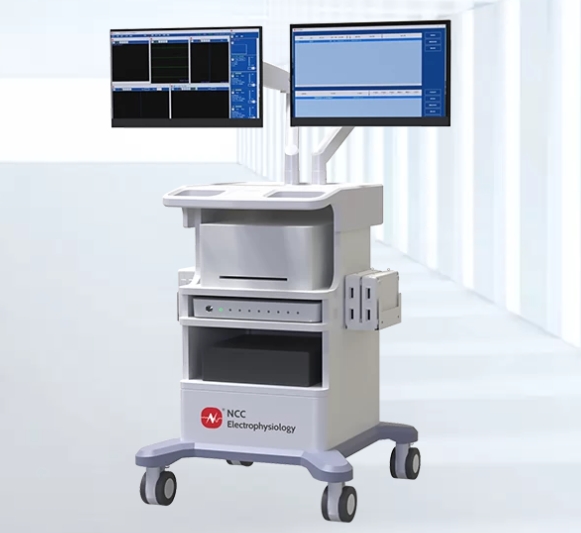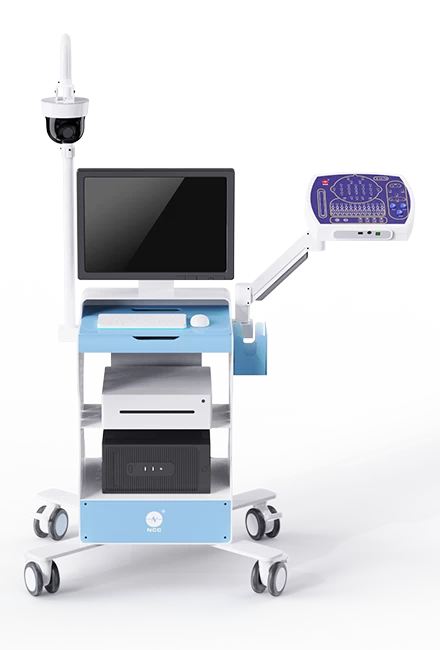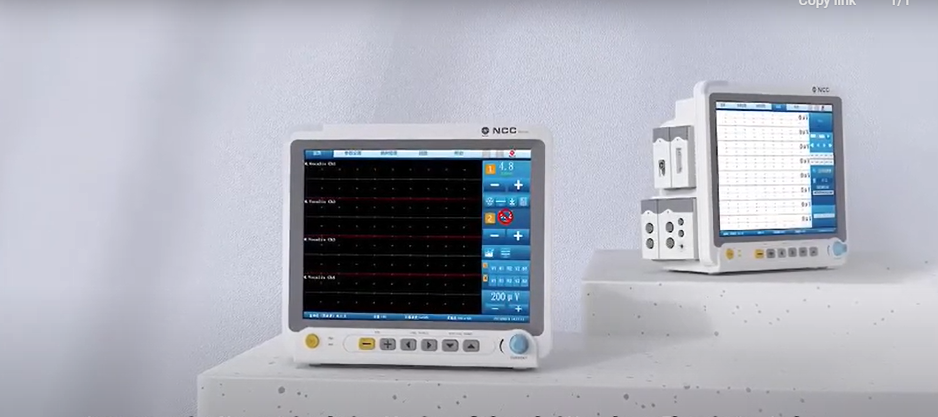The Role of Surface EMG Systems in Physical Therapy: Enhancing Recovery and Performance
In the world of physical therapy, the ability to monitor and assess muscle activity is critical for designing effective rehabilitation programs. One of the most valuable tools in achieving this is the Surface Electromyography (sEMG) System. This non-invasive technology enables therapists to measure electrical activity in muscles, providing insights into muscle function, fatigue, and overall neuromuscular health. Whether it's helping patients recover from injuries or improving athletic performance, sEMG systems are revolutionizing the way physical therapists approach treatment.
In this article, we will explore the role of surface EMG systems in physical therapy, their benefits in recovery and performance enhancement, and how companies like NCC—a leader in neuroelectrophysiological equipment—are pushing the boundaries of rehabilitation technology.

What is Surface EMG?
Surface Electromyography (sEMG) is a diagnostic tool that measures the electrical activity produced by skeletal muscles during contraction. It uses electrodes placed on the surface of the skin to detect and record the signals generated by muscles as they contract and relax. This technology provides real-time data that can help therapists monitor muscle performance, track rehabilitation progress, and identify potential issues that might not be visible through traditional diagnostic methods.
In physical therapy, sEMG systems play an important role in evaluating muscle activation patterns, assessing strength imbalances, and guiding treatment decisions. By providing objective data, these systems help therapists tailor recovery programs and ensure that patients are engaging in exercises effectively.
How Surface EMG Enhances Recovery in Physical Therapy
Precise Muscle Monitoring
One of the primary benefits of sEMG in physical therapy is its ability to precisely monitor muscle activity. For patients recovering from injuries, muscle imbalances or weakness can significantly slow down the healing process. By using an sEMG system, physical therapists can assess how muscles are functioning in real-time, pinpointing areas that may require more focused attention.
For instance, a therapist can observe whether certain muscles are underactive or overcompensating during rehabilitation exercises. This data allows for more targeted interventions, ensuring that patients engage the correct muscles and avoid further strain on injured areas.
Tracking Progress and Recovery
Recovery from an injury is often a gradual process, and measuring progress can sometimes be difficult without objective data. Traditional assessments, such as strength tests or visual observation, may not always give an accurate representation of muscle recovery. With sEMG, therapists can track improvements in muscle activation over time, giving them a clearer picture of a patient’s recovery journey.
By comparing baseline measurements with ongoing data, physical therapists can fine-tune rehabilitation programs to ensure that patients are progressing as expected. This continuous feedback loop helps avoid unnecessary setbacks and can accelerate recovery by ensuring that patients are performing exercises correctly and at the right intensity.
Improving Posture and Movement Patterns
Proper posture and movement patterns are essential for preventing further injury and enhancing long-term health. However, many patients with musculoskeletal injuries develop compensatory movement patterns that can delay recovery or even cause additional problems.
By using sEMG, physical therapists can assess how muscles are activated during common movements such as walking, sitting, or lifting. If a patient is relying on improper muscles or engaging muscles inefficiently, the therapist can use this data to correct movement patterns and posture. This can lead to better rehabilitation outcomes and a reduction in the risk of re-injury.
Reducing Muscle Fatigue and Overuse
In the rehabilitation process, overusing or fatiguing a muscle too early can be detrimental to recovery. By monitoring the intensity and duration of muscle activity with sEMG, therapists can identify early signs of fatigue or overuse, preventing patients from pushing their muscles beyond their limits. This is particularly important in post-surgical recovery or when dealing with chronic pain conditions, where muscle fatigue can lead to setbacks.
sEMG systems allow therapists to make real-time adjustments to exercise intensity or duration, ensuring that patients are progressing at a sustainable pace. This personalized approach helps patients avoid injury while building strength and endurance over time.
Enhancing Performance with Surface EMG
In addition to aiding recovery, surface EMG systems are also valuable tools for improving athletic performance. By providing real-time data on muscle activation, sEMG systems can help athletes optimize their training routines and enhance performance outcomes.
Maximizing Muscle Efficiency
For athletes, improving muscle efficiency is key to maximizing performance. sEMG allows coaches and therapists to identify which muscles are being used most effectively during specific exercises, providing valuable insights into how an athlete can optimize their training regimen. By identifying areas of muscle inefficiency, therapists can work with athletes to correct movement patterns and ensure that muscles are firing in the right sequence.
Preventing Overtraining and Injuries
Overtraining can lead to injury, particularly in high-performance athletes who push their bodies to the limit. With sEMG, therapists can monitor muscle fatigue levels and detect early signs of overtraining. This enables them to adjust an athlete’s training intensity and duration to prevent burnout and injury. By using sEMG data to track muscle recovery, therapists can ensure that athletes are training smart, not hard, which ultimately leads to better performance and fewer injuries.
Improving Neuromuscular Coordination
Neuromuscular coordination is the ability of the brain to effectively coordinate muscle movement. sEMG systems can assess the timing and synchronization of muscle contractions, providing valuable insights into how well the nervous system is controlling muscle activity. This is particularly important for athletes who need to perform complex, rapid movements, such as in sports like tennis, sprinting, or weightlifting.
By using sEMG data, therapists can design training programs that improve neuromuscular coordination, allowing athletes to perform more efficiently and with greater precision.
NCC’s Role in Advancing Rehabilitation Technology
NCC is a leading provider of neuroelectrophysiological equipment and solutions, focusing on the innovation and development of electrophysiology and rehabilitation technology. As a one-stop provider of neurophysiological equipment, consumables, and solutions, NCC has become one of the leading solution providers in China’s electrophysiology field. Their commitment to continuous research and development has led to the creation of cutting-edge surface EMG systems that are transforming the way physical therapy is practiced.
NCC's surface EMG systems are designed to offer highly accurate, real-time muscle data, making them invaluable tools for both rehabilitation and performance enhancement. With user-friendly interfaces and advanced analytical capabilities, NCC’s EMG systems allow therapists to gain deep insights into muscle activity, improving recovery outcomes and enhancing athletic performance.
Conclusion
Surface EMG systems are playing a crucial role in the future of physical therapy. By providing valuable insights into muscle function and performance, these systems enable therapists to create more effective, personalized treatment plans that enhance recovery and prevent injuries. Whether you're helping a patient recover from surgery or optimizing an athlete’s training, surface EMG technology is an indispensable tool for achieving better outcomes.
With the continuous innovation and development from companies like NCC, physical therapists are equipped with the tools they need to offer cutting-edge care and achieve the best possible results for their patients. Whether for rehabilitation or performance enhancement, surface EMG is revolutionizing the way we approach muscle health and recovery.

 中文
中文 Arabic
Arabic Spanish
Spanish Hindi
Hindi French
French Indonesian
Indonesian Portuguese
Portuguese Persian
Persian Russian
Russian Korean
Korean German
German Vietnamese
Vietnamese Turkish
Turkish



